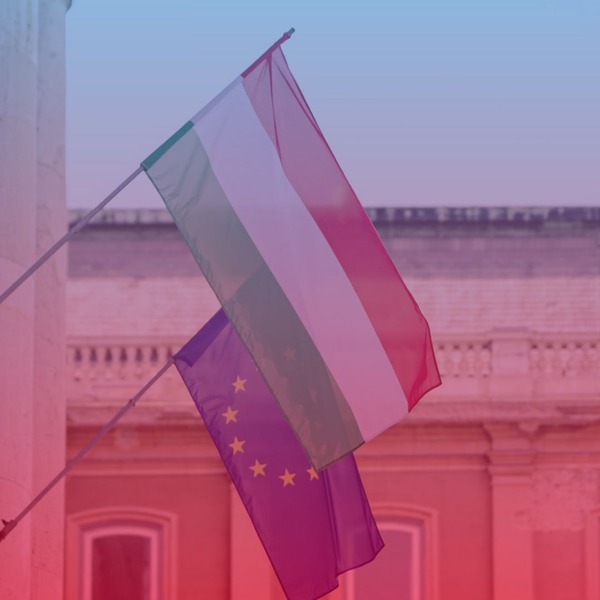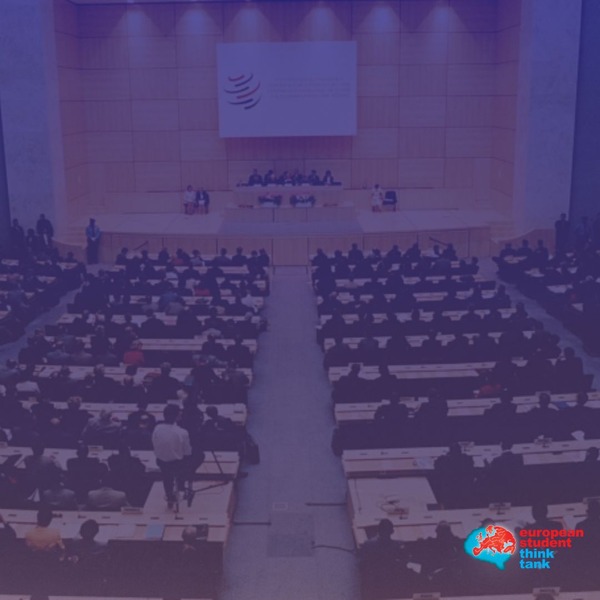
Written by: Pablo Villar Bolaños
Edited by: Alessia Calarese
Abstract
Since the beginning of Russia´s invasion of Ukraine in 2022, Moscow has repeatedly declared red lines explicit nuclear threats, aimed at deterring both Ukraine and NATO. Although these red lines are clearly ‘nuclear points of no return’, Russia has so far refrained from decisive nuclear or large-scale military retaliation when their thresholds are crossed. This article argues that Russia´s approach is based on strategic ambiguity: by emphasizing the potential for escalation without committing to a specific response, Moscow manipulates fear and uncertainty to influence adversary behaviour. Drawing on deterrence theory and the concept of nuclear brinkmanship, the analysis underlines how repeated breaches of red lines, especially in relation to Western military assistance to Ukraine, have gradually eroded Russia’s credibility. However, measured Russian responses suggest a deliberate strategy of escalation management, seeking to maintain maximum leverage while avoiding catastrophic conflict. The findings emphasise the complexity of nuclear deterrence in contemporary conflicts and the need to understand fear-based signalling in shaping global security dynamics.
Introduction
Since the Russian invasion of Ukraine in 2022, Moscow has issued dozens of distinct red lines directed both at Ukraine and the North Atlantic Treaty Organization (NATO). These redlines have been accompanied by warnings of consequences ranging from cutting Russian gas supplies to Europe to a full scaled nuclear escalation. Yet, the majority of these boundaries have been crossed by Ukraine and NATO without provoking any significant retaliation from Russia, calling into question the credibility of Russia’s threats.
In this context, red lines are perceived as “nuclear points of no return” (Schelling, 19662020, p.19), meaning, thresholds at which a nation´s vital interests are so profoundly imperiled, that crossing them would trigger nuclear retaliation. While Russia’s vital interests, including its control over spheres of influence, are undoubtedly under threat, Moscow has refrained from treating its red lines as definite points of no return. This then raises a critical question: why does Russia not act upon the various red lines it has communicated to NATO in relation to the war in Ukraine? The matter is particularly perplexing given that credibility is a cornerstone of effective deterrence. Without the belief that an adversary will enforce its red lines, deterrence lacks substance (Schelling, 19662020, p.19).
In light of this, understanding how Russia is framing its red lines becomes even more crucial, especially as President Putin announced in September 2024 anticipated revisions to Russia’s doctrine. These developments, including an expansion of the nuclear mission in response to perceived Western interventions in Ukraine, underscore the immediacy of this issue.
The Logic of Nuclear Brinkmanship: Fear, Uncertainty, and the Manipulation of Risk in Deterrence
In most scenarios, the threat of initiating a nuclear first strike lacks credibility. Therefore, to deter conventional aggression through nuclear means, states often resort to manipulating the risk of inadvertent nuclear escalation (Schelling, 19662020). As Thomas Schelling (1959) posits, a state signalling a threat that leaves outcomes to chance imposes an additional layer of potential cost on its adversaries actions. As conflict intensifies, the likelihood of misunderstandings, miscalculations, and mistakes increases. Deterrence throughout the manipulation of risk leverages the fear of unintended escalation, making the adversary question the level of risk it is willing to assume to achieve its objectives (Schelling, 19662020). This strategy forces the adversary to grapple with the uncertainty of its actions potentially leading to nuclear war, a concept commonly referred to as nuclear brinkmanship.
Nuclear powers often communicate their thresholds for nuclear weapons employment, frequently through explicit red lines. These red lines exert the greatest deterrent effect when accompanied by an element of uncertainty. It is this ambiguity of whether the red line will be enforced or not, that creates a powerful psychological impact on the adversary (Schelling, 1959). At the same time, this element of uncertainty opens the possibility of bluffing. By creating ambiguity about whether the stated threshold is absolute, the deterrer can restrict the conflict to levels below its true nuclear threshold, effectively constraining the adversaries actions. This strategy benefits the deterrer by fostering caution in the adversary. Yet, as Schelling (1959) warns, repeated bluffing diminishes the credibility of threats over time, ultimately eroding the deterrent effect.
Bluffing, signalling, and risk manipulation are effective only to the extent that they instill fear. Kenneth Waltz notes that nuclear deterrence diverges from traditional forms of conventional deterrence by emphasizing punishment and intimidation, underpinned by the capacity to inflict catastrophic damage (Sagan & Waltz, 2013). The inherent logic of nuclear deterrence nullifies the benefits of military intervention by leveraging the fear of nuclear reprisal, whether limited or devastating, as a compelling deterrent to aggression. This logic of fear manifests in two key phenomena. First, the focus on cities and civilian casualties over military targets underscores the devastating potential of nuclear war. Second, the prospect of nuclear conflict arising from miscalculations or reckless political decisions exacerbates this apprehension (Sagan & Waltz, 2013). Together, these elements underscore the centrality of fear and uncertainty in the logic of nuclear deterrence.
Russia’s Nuclear Strategy: Escalation Management, Ambiguity, and Strategic Signalling
Since the 2000s, Russia’s nuclear policy has consistently demonstrated a willingness to employ nuclear weapons in a first-strike capacity. The 2000 Military Doctrine explicitly states that Russia may resort to nuclear weapons not only in response to a nuclear attack but also in reaction to “large scale conventional aggression in situations critical for Russian national security” (Putin, 2000, p.1). This stance was brought into sharp focus in late November 2024, when the US agreed to supply Ukraine with ATACMS missiles capable of striking nuclear territory. President Putin had repeatedly framed such a move as a direct act of military involvement by the United States (Faulconbridge & Kolodyazhnyy, 2024). Mere hours after Ukraine carried out its first strike within Russia, Moscow announced long anticipated changes to its nuclear doctrine. These updates include significant alterations that lower the threshold for nuclear weapons use and, according to some observers, reaffirm Russia’s strategy of escalating to de-escalate (E2DE) (Glantz & Yacoubian, 2022). Notably, revisions to The Essence of Nuclear Deterrence now explicitly extend nuclear deterrence to aggressors targeting Russia or its allies, even if these adversaries are non nuclear states supported by nuclear powers. As Balitskiy (2023) observes, the latest doctrine aligns with Russia´s existing strategic documents, which consistently emphasize that threats to its sovereignty and territorial integrity constitute legitimate grounds for nuclear weapons use.
However, viewing Russia’s nuclear strategy solely through the lens of E2DE and its lowered nuclear threshold oversimplifies the complexity of its nuclear policy. Kofman and Fink argue (2020) that Russian nuclear strategy is underpinned by a nuanced understanding of escalation control, crisis management and the diverse dynamics of conflict and warfare. The assertion that Russia strictly adheres to E2DE neglects critical principles central to its strategy, including deterrence through fear inducement and the measured, limited use of force. Additionally, Kofman (2020) highlights that Russian deterrence relies on the interplay of deliberate signaling and calculated ambiguity. For instance, Russia’s 2020 Basic Principles of State Policy in the Sphere of Nuclear Deterrence explicitly embraces this ambiguity, aiming to leave adversaries uncertain about the specific thresholds for nuclear action (Putin, 2020).
Further, strategic deterrence in the Russian context prioritizes signaling resolve while avoiding full-scale military escalation, carefully assessing whether retaliating to a breached red line serves broader strategic objectives. Consequently, Russian escalation management employs ambiguity across various stages of conflict, integrating both conventional non strategic and strategic nuclear capabilities. This approach forms a flexible and context dependent deterrence ladder. Russian actions, therefore, reflect calculated and contextual strategies, predicated on the assumption that calibrated escalation can deter adversaries without spiraling into uncontrolled conflict. This “dosed approach” underscores Russia’s emphasis on managing adversary perceptions rather than relying on irrational behaviour to instill fear (Kofman et al., 2020. p 3). By operating within a strategic framework, Russia seeks to achieve specific objectives while maintaining control over escalation dynamics.
Red Lines and the Art of Strategic Ambiguity in Russia’s Nuclear Policy
Strategic bluffling provides a partial explanation for Russia’s establishment of multiple red lines, aimed at fostering uncertainty among Western states. This approach capitalizes on the worries of Western leaders, and especially their populations, regarding the potential for conflict escalation within Europe. By framing red lines as thresholds with the potential for nuclear escalation, Russia effectively limits the extent to which the West provides military aid to Ukraine (Kimmitt, 2024). Initially, this strategy proved successful, as Western support for Ukraine in the form of advanced weaponry was delivered cautiously, driven by concerns over inadvertent escalation. Similarly, the fear of escalation has deterred the West from direct intervention in the conflict, such as imposing a no fly zone or deploying ground forces.
However, as Western states have gradually breached many of Russia’s red lines, the credibility of these threats has diminished. The erosion of credibility has emboldened the West to increase its support to Ukraine more assertively. As Lawrence Freedman observes, the effectiveness of Russia’s strategic bluffling as a deterrent has declined in tandem with its declining credibility (Freedman 2024). Additionally, President Putin appears acutely aware of his reputation for irrationality among Western audiences, a perception that Russia likely leverages to further deepen uncertainty surrounding its nuclear threats (Kofman et al., 2020). Western populations, in particular, often view Putin as someone willing to go to any lengths to achieve his objectives, including using nuclear weapons. As Waltz suggests, it is in Putin’s and Russia’s strategic interest to cultivate and amplify the fear of nuclear conflict, particularly among Ukrainians and Europeans, by crafting red lines that retain a degree of uncertainty or unpredictability (Sagan & Waltz, 2013).
Nevertheless, theory alone cannot fully account for why Russia has refrained from acting on many of its crossed red lines. It is essential to consider that Russia views red lines not as rigid triggers for retaliation, as traditional deterrence theory might suggest, but as flexible signalling mechanisms. Among the red lines that have been crossed, those accompanied by the most aggressive rhetoric often relate to the provision of offensive weaponry by the West, such as F-16 aircraft, long range missiles, tanks or depleted uranium, tipped munitions (Malenko, 2024). Yet, rather than escalating in response, Moscow has largely sought to downplay the battlefield significance of these developments, despite its initial assertive stance. This raises a key question: if Russia’s red lines are meant to serve as firm deterrents, why does its response often take the form of lower-intensity actions rather than direct escalation? Of course, incidents of sabotage targeting NATO-aligned military-industrial sites, which are widely attributed to Russia, have increased throughout the conflict. However, these actions are difficult to directly link to the crossing of specific red lines and are more plausibly attributed to broader motivations within Russia’s “hybrid warfare” strategy. Rather than enforcing its red lines through overt military escalation, Russia appears to rely on asymmetric interventions (such as sabotage and cyberattacks) to impose costs on its adversaries while avoiding direct confrontation. This strategic choice suggests an attempt to contain perceived threats without provoking an uncontrollable escalation, particularly against a nuclear-armed adversary.
In this context, the contrast between Russia’s nuclear posturing and its preference for covert or limited-force actions further complicates the credibility of its deterrent threats. If nuclear escalation were a truly imminent response to red-line violations, why would Russia resort to indirect means rather than decisive retaliation? This discrepancy calls into question whether its red lines function as absolute thresholds or as flexible tools of coercion, adjusted in practice to manage risks rather than trigger full-scale conflict.
Therefore, although deterrence theory offers a partial explanation for Russia’s measured response to red line breaches, it does not fully clarify Moscow´s deliberate restraint. Instead, according to the Russian escalation management model, the psychological aspect (manipulating perceptions of risk and potential costs though carefully calibrated actions) varies depending on both the adversary and the specific context. By avoiding precipitous responses, Russia preserves opportunities for de-escalation while maintaining strategic leverage.
Conclusion
This article has argued that Russia´s repeated establishment of red lines (often followed with explicit nuclear threats) serves more as an exercise in strategic ambiguity than as a guaranteed trigger for nuclear escalation. By framing these boundaries, purposefully creating uncertainty, Moscow exploits the fear of inadvertent escalation, compelling the adversaries to act more cautiously. However, as evidenced by Western incremental, yet continuous, military support to Ukraine, Russia’s credibility in enforcing its red lines is gradually waning.
The wider relevance of this analysis lies in how nuclear armed powers engage in brinkmanship within the global arena. While Russia’s approach serves as a focal point, the broader dynamics of nuclear strategy (rooted in fear, ambiguity, and signalling) apply to other states navigating strategic competition. The erosion of credibility in deterrence further highlights the growing role of political and economic measures in shaping nuclear posturing. This framework is not exclusive to Russia; other powers, such as China in its handling of Taiwan, may employ similar tactics to manipulate risk and assert influence. Understanding these patterns is crucial for anticipating future crises and assessing how different nations leverage nuclear strategies to achieve their geopolitical objectives.
References
Anastasiia Malenko. (2024, August 5). Ukraine is finally deploying us-made F-16 fighter jets, Zelenskiy says. Reuters. https://www.reuters.com/world/europe/ukraine-finally-deploying-f-16-fighter-jets-says-zelenskiy-2024-08-04/
Baklitskiy, A. (2023). What we learned from recent calls for a Russian nuclear attack. Carnegie Endowment for International Peace. https://carnegieendowment.org/russia-eurasia/politika/2023/07/what-we-learned-from-recent-calls-for-a-russian-nuclear-attack?lang=en
Faulconbridge, G., & Kolodyazhnyy, A. (2024, November 19). Putin issues a warning to the United States with new nuclear doctrine. Reuters. https://www.reuters.com/world/europe/putin-issues-warning-us-with-new-nuclear-doctrine-2024-11-19/
Freedman , L. (2024). Fuzzy red lines in ukraine. https://samf.substack.com/p/fuzzy-red-lines-in-ukraine
Glantz, M., & Yacoubian, M. (2022). Is Russia escalating to de-escalate? United States Institute of Peace.https://www.usip.org/publications/2022/10/russia-escalating-de-escalate
Kimmitt, M. (2024, May 8). How the west is helping Ukraine won’t be enough to win. POLITICO. https://www.politico.eu/article/how-west-help-ukraine-not-enough-win-war-russia/
Kofman, M., Fink, A., & Edmonds, J. (2020). Russian strategy for escalation management: Evolution of key concepts. https://www.cna.org/reports/2020/04/DRM-2019-U-022455-1Rev.pdf
Putin, V. (2000). Russia’s military doctrine | arms control association. Www.armscontrol.org. https://www.armscontrol.org/act/2000-05/russias-military-doctrine
Putin, V. (2020). Basic principles of state policy of the russian federation on nuclear deterrence – the ministry of foreign affairs of the russian federation. Www.mid.ru. https://www.mid.ru/en/foreign_policy/international_safety/1434131/
Sagan, S. D., & Waltz, K. N. (2013). The spread of nuclear weapons: An enduring debate. W.W. Norton & Co.
Schelling, T. C. (1959, August 10). The threat that leaves something to chance. Rand.org; RAND Corporation. https://www.rand.org/pubs/historical_documents/HDA1631-1.html.
Schelling, T. C. (1966). Arms and influence (p.19). Yale University Press.

 Is Nuclear Disarmament Still a Dream? The Third Meeting of State Parties in Perspective
Is Nuclear Disarmament Still a Dream? The Third Meeting of State Parties in Perspective  Strategic Saboteur: Hungary’s Entrenched Illiberalism and the Fracturing of EU Cohesion
Strategic Saboteur: Hungary’s Entrenched Illiberalism and the Fracturing of EU Cohesion  The invention of development: power, narrative, and the afterlife of Truman’s speech
The invention of development: power, narrative, and the afterlife of Truman’s speech  Is the World Trade Organisation a Failure?
Is the World Trade Organisation a Failure? 


